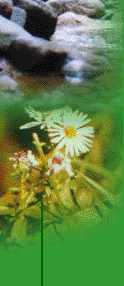Description:
The Northern Copperhead (Agkistrodon contortrix mokasen) and the Southern Copperheads (Agkistrodon
contortrix contortrix) are medium size venomous snakes. The Northern copperhead has dark brown hour glass shaped markings
on its back with a lighter brown background. They will usually have blotches between each marking that is usually dark brown.
Also the hour glass markings will be connected. The Southern copperhead is a lot lighter and the hourglasses will be broken
up and with no spots in between each marking. In Georgia most copperheads found are intergrades
between the two species. The average length for both subspecies is 2ft to 3ft long. The Northern copperhead’s maximum
length was just over 5ft at 63in. The Southern copperhead's maximum length was at 53 inches. The juveniles of both subspecies
look identical to there parent except that they have a yellow tip on the tail that they use to bring in prey.
Habitat:
Both
subspecies of copperheads can be found in almost any terrestrial habitats including rocky outcrops which are mostly found
in the mountains, the can be found near a creek or river, on the margins of swamp, in and around abandoned farms, and in suburbia
where they can be found in people own backyards. They are known to be found in English ivy patches were they conceal themselves
better.
Prey:
Both
subspecies will prey upon small rodents, birds, lizards, frogs, volves, and even smaller snakes.
Abundance
and Behavior:
The
copperhead is the most common snake in the southeast. They can be found all over Georgia except for the southeastern portion. During the spring and fall they are
mostly found during the daylight hours. During the hot summer months the copperhead becomes almost strictly nocturnal (comes
out at night). In my experience they are most active in the fall during the second of two mating seasons. When threaten they
will puff up to make themselves look bigger, rattle their tail, and will release a strong musk from their cloacae.



